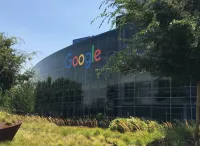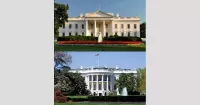Earth Day is an annual event on April 22nd dedicated to demonstrating support for environmental protection. It was first held on April 22, 1970, and has grown into a global phenomenon. Today, Earth Day events are coordinated worldwide through earthday.org, involving an estimated 1 billion people across more than 193 countries, highlighting its significant impact and reach.
1918: Soviets adopt the Gregorian calendar
In 1918, the Soviets adopted the Gregorian calendar, coincidentally making April 22, 1970, the 100th anniversary of Vladimir Lenin's birth.
1920: Lenin instituted subbotniks
In 1920, Lenin instituted subbotniks, days on which people would do community service, typically removing rubbish from public property and collecting recyclable material.
1946: Reuther led the UAW
In 1946, Walter Reuther led the United Auto Workers (UAW).
1955: Lenin's birthday proclaimed national holiday
In 1955, Nikita Khrushchev proclaimed Lenin's birthday, April 22, a national holiday celebrating communism.
1960: Dynamic period for ecology in the US
The 1960s had been a very dynamic period for ecology in the US. Pre-1960 grassroots activism against DDT in Nassau County, New York, and widespread opposition to open-air nuclear weapons tests with their global nuclear fallout, had inspired Rachel Carson to write her influential bestseller, Silent Spring (1962).
1962: Publication of Silent Spring
In 1962, Rachel Carson published her influential bestseller, "Silent Spring", which was inspired by grassroots activism against DDT and opposition to nuclear weapons tests. This book had a significant impact on the environmental movement.
1968: Human Ecology Symposium
In 1968, Morton Hilbert and the U.S. Public Health Service organized the Human Ecology Symposium, an environmental conference for students, which led to the planning of the first Earth Day.
January 28, 1969: Union Oil Platform A Blowout
On January 28, 1969, Union Oil's Platform A, off the coast of Santa Barbara, California, blew out, causing a massive oil spill that killed thousands of marine animals and mobilized activists to create environmental regulation, environmental education, and Earth Day.
September 20, 1969: Nelson announces plans for an Environmental Teach-In
On September 20, 1969, Senator Nelson first announced his plans for an "environmental teach-In" in a little-publicized talk at the University of Washington.
1969: Proposal for Earth Day
In 1969 at a UNESCO conference in San Francisco, peace activist John McConnell proposed a day to honor the Earth and the concept of peace, to first be observed on March 21, 1970, the first day of spring in the northern hemisphere. Later, United States Senator Gaylord Nelson proposed the idea to hold a nationwide environmental teach-in on April 22, 1970.
1969: Idea of a global Earth Day introduced at UNESCO Conference
In 1969, John McConnell first introduced the idea of a global holiday called "Earth Day" at the UNESCO Conference on the Environment.
1969: Santa Barbara oil spill and Cuyahoga River fire
In early 1969, saturation news coverage was given to the Santa Barbara oil spill and the Cuyahoga River catching fire, which led Senator Gaylord Nelson to think the time was ripe for an environmental initiative.
January 23, 1970: Project Survival at Northwestern University
On January 23, 1970, Project Survival, an early environmentalism-awareness education event, was held at Northwestern University. This was the first of several events held at university campuses across the United States in the lead-up to the first Earth Day.
January 28, 1970: Creation of Environmental Rights Day
On January 28, 1970, the first anniversary of the oil blowout, Environmental Rights Day was created, and the Declaration of Environmental Rights was read.
March 21, 1970: Proposal for a day to honor the Earth
On March 21, 1970, at a UNESCO conference in San Francisco, John McConnell proposed a day to honor the Earth and the concept of peace, to be observed on the first day of spring in the northern hemisphere.
April 1970: First Earth Day
In April 1970, along with a federal proclamation from U.S. Sen. Gaylord Nelson, the first Earth Day was held.
April 22, 1970: First Earth Day
On April 22, 1970, the first Earth Day was held to demonstrate support for environmental protection.
1970: Concept of "teach-ins" had become passé.
By 1970, the concept of "teach-ins" had become passé.
1970: Clean Air Act and labor funding
In 1970, the Clean Air Act was successfully lobbied for, and the UAW made the first donation to support the first Earth Day in the amount of $2,000. Under Walter Reuther's leadership, the UAW also funded telephone capabilities and financed, printed, and mailed all of the literature and other materials for the first Earth Day and mobilized its members to participate in the public demonstrations across the country.
1970: New York City activities for Earth Day
In the winter of 1969-1970, a group of students at Columbia University agreed to head up the New York City activities for Earth Day within the national movement. Liberal Republican mayor John Lindsay became fully engaged in supporting the event.
1970: First Earth Day events
On the first Earth Day in 1970, an estimated 20 million Americans took part in rallies, marches, and teach-ins calling for environmental reform.
1970: Congressional election year
The year 1970 was a congressional election year. Former Lindsay organizer, Steve Haft, summed up this faction's attitude at an Environmental Action staff meeting, "We had 20 million people in the streets in an election year, and you plan to sit out the election? Are you nuts?"
1970: Pogo anti-pollution poster
Walt Kelly created an anti-pollution poster featuring his comic strip character Pogo with the quotation "We have met the enemy and he is us" to promote the 1970 Earth Day.
February 26, 1971: UN Secretary-General supports Earth Day
On February 26, 1971, UN Secretary-General U Thant signed a proclamation supporting John McConnell's global initiative to celebrate Earth Day annually.
1972: Kurt Waldheim observed Earth Day
In 1972, United Nations secretary-general Kurt Waldheim observed Earth Day with similar ceremonies on the March equinox.
1978: Margaret Mead supports Earth Day
In 1978, Margaret Mead added her support for the equinox Earth Day.
September 11, 1980: First Canadian Earth Day
On Thursday, September 11, 1980, the first Canadian Earth Day was held, organized by Paul D. Tinari at Queen's University. Activities included educational lectures, garbage pick-up, and tree plantings.
May 5, 1990: Release of "Tomorrow's World" Earth Day-Themed Single
On May 5, 1990, Warner Bros. Records released an Earth Day-themed single titled "Tomorrow's World", written by Kix Brooks and Pam Tillis. It featured vocals from numerous artists and reached number 74 on the Hot Country Songs chart.
1990: Earth Day activities boosts recycling
Earth Day activities in 1990 mobilized 200 million people in 141 countries and gave a huge boost to recycling efforts worldwide.
1990: Earth Day goes international
In 1990, Denis Hayes took Earth Day international and organized events in 141 nations.
1990: Earth Day Events Sponsored by Two Groups
In 1990, two separate groups, The Earth Day 20 Foundation and Earth Day 1990, formed to sponsor Earth Day events. Senator Gaylord Nelson was honorary chairman for both. Disagreements arose regarding leadership, structure, and strategies. Key Earth Day 20 Foundation organizers criticized Earth Day 1990 for including Hewlett-Packard on their board, citing the company's chlorofluorocarbon emissions. Earth Day 20 used grassroots organizing, while Earth Day 1990 employed focus groups, direct mail fundraising, and email marketing.
1992: United Nations Earth Summit
In 1992, Earth Day activities in 1990 helped pave the way for the United Nations Earth Summit in Rio de Janeiro.
2003: Water for Life Campaign
In 2003, the Earth Day theme was the Water for Life Campaign. Earth Day Network developed a water quality project called "What's in Your Water?" Water-related events were held worldwide, and educational materials focused on water were distributed.
2004: Voter Registration and Tree Planting Events
In the U.S. in 2004, Earth Day Network and its partners focused on voter registration for Earth Day, registering hundreds of thousands of voters. Major tree planting events also took place. Other prominent U.S. Earth Day events included an annual cleanup in Dayton, Ohio and the 3rd Annual Community Based Solutions to Environmental Health & Justice Conference in Seattle, Washington.
2005: Healthy Environments for Children Theme
In 2005, the theme for Earth Day was Healthy Environments for Children.
2006: Focus on Science, Faith, and Global Expansion
Earth Day 2006 focused on science and faith. It expanded into Europe, with events and speeches in most EU countries. Key events included the "Festival on Climate Change" in Utrecht and the "Chernobyl 20 Remembrance for the Future" conference in Kyiv. Events were also held in China, Russia, and the U.S.
2007: Launch of Global Warming in the Pulpit Pledge and Live Earth Event
In 2007, the Global Warming in the Pulpit Pledge campaign was launched, mobilizing faith leaders across the U.S. and Canada to preach on global climate change. Later in 2007, the Live Earth global music event took place worldwide.
March 20, 2008: Earth Day Celebrations Held Worldwide
On March 20, 2008, Earth Day ceremonies were held worldwide. In addition to the ceremony at the United Nations, ceremonies were held in New Zealand, and bells were sounded in California, Vienna, Paris, Lithuania, Tokyo, and many other locations.
2008: Call for Climate Campaign
Earth Day 2008 featured a "Call For Climate," challenging the public to make one million calls to Congress about climate change legislation. Large climate rallies were held in eight major U.S. cities, with notable speakers and musical performances. Many Earth Day events were held around the world from the Earth Day on Campus campaign.
2009: National Teach-In on Global Warming Solutions
In 2009, the National Teach-In on Global Warming Solutions reached college campuses, civic organizations, and faith groups across the U.S. Members of Congress addressed campuses via video conference.
2010: Climate Rally on the National Mall
In 2010, The Climate Rally on the National Mall in Washington, D.C., drew in more than 150,000 activists to demand that U.S. Congress pass comprehensive climate legislation. The nine-hour event featured more than 70 high-profile speakers.
2010: 40th Anniversary of Earth Day
In 2010, an estimated one billion people worldwide took action for the 40th anniversary of Earth Day. Partners engaged in climate rallies and the Billion Acts of Green™ campaign. Elected officials participated in dialogues about sustainable green economies. Students participated in school greenings. Earth Day Network partnered with Twentieth Century Fox Home Entertainment's Avatar Home Tree Initiative to plant trees.
September 2011: Recognition at Clinton Global Initiative
In September 2011, at the Clinton Global Initiative, President Clinton recognized Earth Day Network's project to plant over 1.1 million trees as an exemplary approach to addressing global challenges.
2013: Creation of the Black Lives Matter Organization
In 2013, the Black Lives Matter organization was created.
2013: MobilizeU Program Expansion
In 2013, the MobilizeU program, designed to educate and activate college students around Earth Day and environmental issues, expanded to 296 universities in 51 countries and 46 US states.
2013: The Face of Climate Change Theme
In 2013, the theme for Earth Day was "The Face of Climate Change," aiming to personalize the issue. Images were collected and displayed at events worldwide. High-level organizations and individuals participated in the campaign.
2013: Green Cities Campaign Launch
In the fall of 2013, Earth Day Network launched the Green Cities campaign to help cities become more sustainable and reduce their carbon footprint, focusing on buildings, energy, and transportation.
2014: Global Climate Change Personalization
In 2014, the goal of Earth Day was to personalize the challenges surrounding global climate change and start the five-year countdown to Earth Day 2020, the 50th anniversary.
2014: Green Cities Theme
In 2014, the theme of Earth Day was Green Cities, with the campaign launched the previous year to help cities become more sustainable and reduce their carbon footprint. The campaign focused on buildings, energy, and transportation.
2015: Green Cities, MobilizeU, Climate Education Week, and Faith Mobilization Campaigns
In 2015, Earth Day Network designed and executed four campaigns for its major constituencies: Green Cities, MobilizeU, Climate Education Week, and Faith Mobilization, all concentrating on the organization's theme: "It's Our Turn to Lead".
2015: United Nations Climate Change Conference in Paris.
In 2015, the United Nations Climate Change Conference in Paris was held, where a historic draft climate protection treaty was adopted by consensus of the 195 nations present.
2015: "It's Our Turn to Lead" Global Theme
In 2015, the global theme for the 45th anniversary of Earth Day was "It's Our Turn to Lead."
2016: Mayors Participate in Earth Day
In 2016, Hundreds of mayors across the world participated in Earth Day primarily focused on urban planning and reforestation.
2016: "Trees for Earth" Theme and Commitments
In 2016, the theme for Earth Day was "Trees for Earth." India, the Caribbean, Vietnam, and Morocco made substantial government commitments. The Black Lives Matter organization engaged with EarthDay.org. Over 36 million trees were planted in India, and Earth Day Network was accepted as an entry on Baidu Baike in China.
2016: Signing of Climate Accord at the United Nations
In 2016, world leaders from 175 nations broke a record by signing the most significant climate accord in the history of the climate movement at the United Nations on Earth Day.
2017: Earth Day Network launches goal of global environmental and climate literacy
In 2017, Earth Day Network (EDN) launched a goal to achieve global environmental and climate literacy by 2020, envisioning a world fluent in climate change concepts and aware of its threats. The focus was on environmental and climate literacy to drive green policies, technologies, and jobs.
2017: Earth Day theme is environmental and climate education
In 2017, the Earth Day theme was environmental and climate education. EDN emphasized education as the foundation for progress, aiming to build a global citizenry knowledgeable in environmental science and ecological issues, empowered to act in defense of environmental protection.
April 2018: Earth Day dedicated to ending plastic pollution
In April 2018, Earth Day's theme was "End plastic pollution," focused on educating citizens about the environmental, climate, and health consequences of plastic use. An online Plastics Pollution Calculator and educational materials were used, leading to increased awareness and actions like plastic cleanups and legislation in numerous countries.
2019: Earth Day theme was Protect Our Species
In 2019, Earth Day's theme was "Protect Our Species", with events and programs designed to spread information about the causes and consequences of growing species extinctions.
2020: Earth Day Network's goal of global environmental and climate literacy
By 2020, the Earth Day Network aimed to achieve global environmental and climate literacy. The intention was for a world fluent in climate change concepts and aware of its unprecedented threat, to accelerate green technologies and jobs.
2020: Countdown to the 50th Anniversary
Earth Day 2014 was part of a five-year countdown to Earth Day 2020, which would mark the 50th anniversary.
2020: Earth Day 2020 celebrates its 50th Anniversary
In 2020, Earth Day celebrated its 50th Anniversary with the theme "climate action". Celebrations included activities such as the Great Global CleanUp, Citizen Science, Advocacy, Education, and art. Due to the COVID-19 pandemic, many activities were moved online, including Earth Day Live, a three-day livestream.
2020: 50th Anniversary of Earth Day
On Earth Day 2020, over 100 million people around the world observed the 50th anniversary in what is being referred to as the largest online mass mobilization in history.
April 22, 2021: Earth Day Live Livestream Event
On April 22, 2021, earthday.org organized the second-annual Earth Day Live livestream event featuring global activists, international leaders, and influencers. It was part of the broader Earth Day 2021 theme, "Restore Our Earth," which featured five primary programs.
2021: Biden administration organized a Leaders' Climate Summit
In 2021, the Biden administration organized a virtual Leaders' Climate Summit. This event featured 40 world leaders and numerous speakers to discuss climate issues and solutions.
2022: Earth Day theme is Invest in Our Planet
In 2022, Earth Day's theme was "Invest in Our Planet" and featured five primary programs: The Great Global Cleanup, Sustainable Fashion, Climate and Environmental Literacy, Canopy Project, Food and Environment, and the Global Earth Challenge.
November 2023: earthday.org released its report Babies vs. Plastics
In November 2023, earthday.org released its report "Babies vs. Plastics", which collated some of the latest science on the health threat that microplastics pose. The Guardian newspaper carried an Op Ed about the report highlighting that it is the children of the Global South who are being the most impacted by exposure to microplastics.
2023: Earthday.org announced the continuation of the "Invest in our Planet" theme for 2023
Earthday.org announced the continuation of the "Invest in our Planet" theme for Earth Day 2023, and that more than one billion citizens participated in Earth Day 2022.
2023: The official theme for 2023 was "Invest In Our Planet"
On Earth Day 2023, the official theme was "Invest In Our Planet". Additionally, a collection of images of Earth, taken from various deep space distances in the Solar System, was published to mark the occasion.
2024: Value of Donation
In 2024, the value of the $2,000 donation from UAW in 1970 is equivalent to $16,194.
2024: Theme for Earthday.org is Planet vs. Plastics
The theme for Earthday.org 2024 is Planet vs. Plastics and to mark that Earthday.org has called for a 60% global reduction in plastic production by 2040.
2040: Earthday.org calls for a 60% global reduction in plastic production
For Earth Day 2024, Earthday.org established the theme Planet vs. Plastics. In line with that theme, Earthday.org has called for a 60% global reduction in plastic production by 2040.
Mentioned in this timeline
Ukraine is a large country in Eastern Europe second in...

Google LLC is a multinational technology company specializing in online...

The White House located at Pennsylvania Avenue NW in Washington...
California is a U S state on the Pacific Coast...
The Union of Soviet Socialist Republics USSR existed from to...
India officially the Republic of India is a South Asian...
Trending
10 days ago Lawsuit Filed Over KISD Stabbing; Killeen Principal Resigns From Ira Cross
7 months ago Josh Bell's Big Night: Solo Homer and Multi-Hit Game ignite Hopes

1 month ago Yungblud teams with Aerosmith for Rolling Stone UK cover; concert and rock relationship.

Sam Heughan is a Scottish actor producer author and entrepreneur widely recognized for his portrayal of Jamie Fraser in the...
1 month ago Rocket Lab's Q3 2025 Results: Record Revenue Growth Fuels Stock Surge.

Daisy Ridley is an English actress widely recognized for her portrayal of Rey in the Star Wars sequel trilogy which...
Popular

Candace Owens is an American conservative political commentator and author...

Ilhan Omar is an American politician currently serving as the...

XXXTentacion born Jahseh Dwayne Ricardo Onfroy was a controversial yet...

Oprah Winfrey an American talk show host television producer actress...

Tom Cotton is an American politician and Army veteran currently...

Frederick Christ Trump Sr - was an American real estate...

